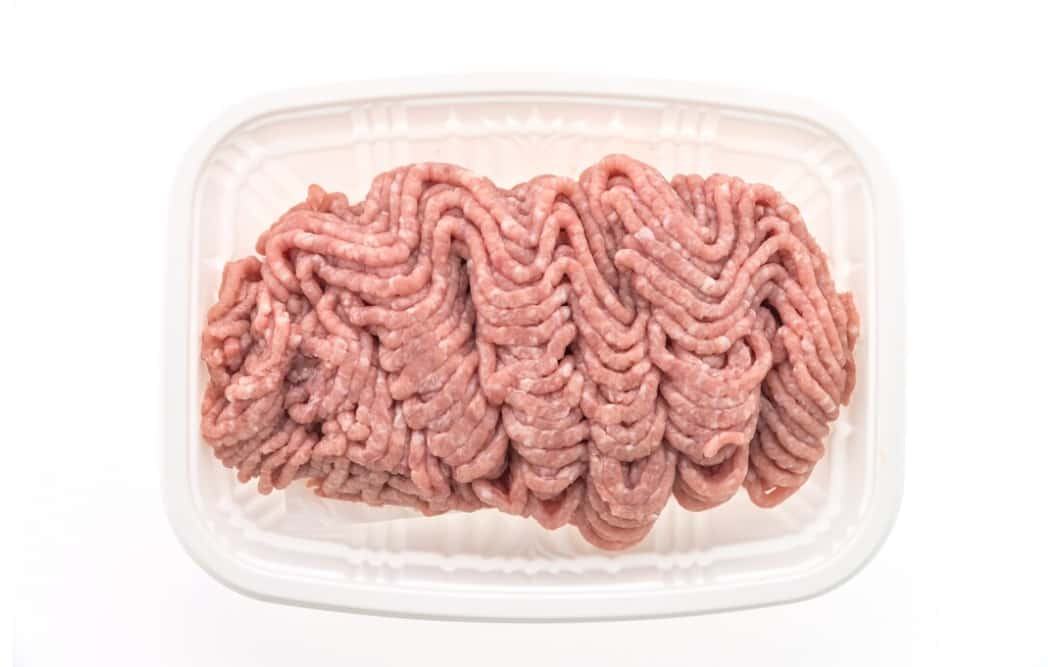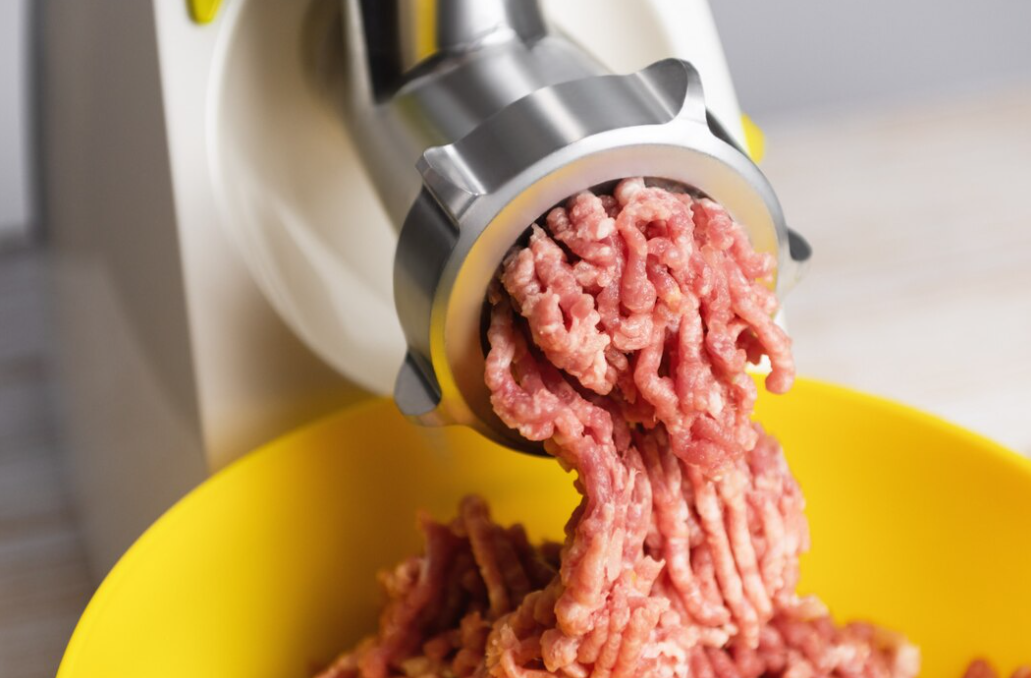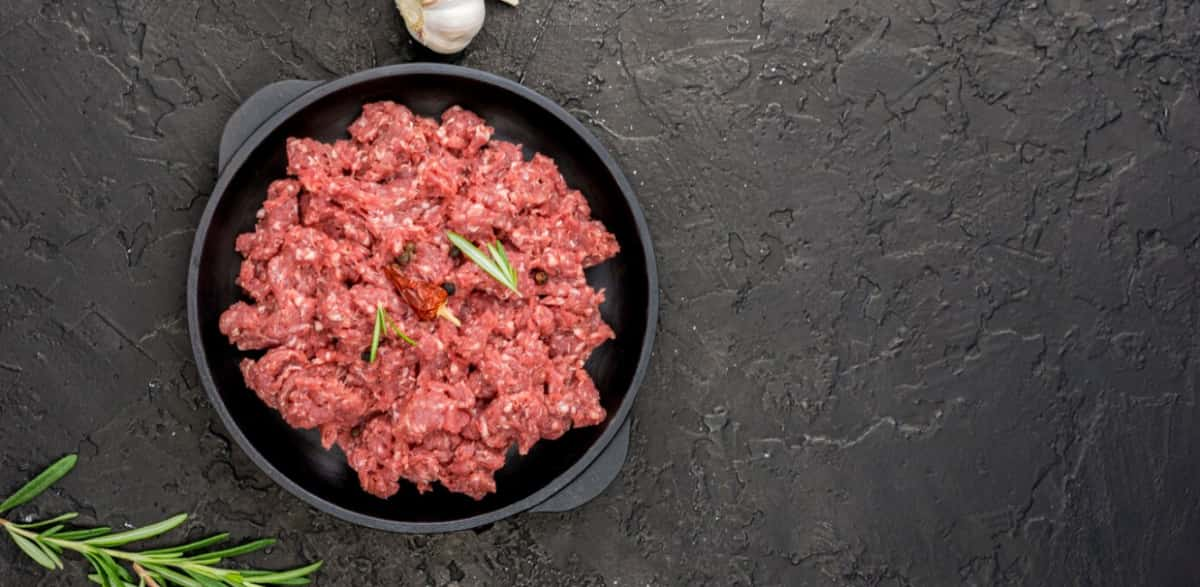Navigating Safe Ground Beef Defrosting Protocols
The method of thawing ground beef often depends on the available time frame. However, defrosting can be a complex procedure, and any carnivorous home cook’s freezer is likely to have a few packs of ground beef at any given time.
Incorrect defrosting can result in foodborne diseases like E.coli or Salmonella. Luckily, several foolproof techniques can be used to safely thaw ground beef. This guide will discuss these approaches, exploring their duration, storage recommendations post-thawing, and tips to ensure proper defrosting. Transitioning from the practical considerations of defrosting burgers at room temperature, unravel also the flavorful history of this beloved dish in “The History Behind the Name: Why ‘Hamburger’?” Explore the origins and evolution of the term, adding a historical perspective to your culinary journey.
Following these guidelines will allow you to relish your preferred ground beef dishes while ensuring safety for you and your loved ones.
Hazards of Room Temperature Ground Beef Thawing
Thawing frozen ground beef at ambient room temperature can present significant food safety risks. The practice of leaving it out on a countertop for hours, such as during a workday, creates an environment conducive to bacterial proliferation. The “danger zone” for bacterial growth in perishable foods is between 40°F and 140°F (4°C to 60°C), a range in which room temperature typically falls. Within this temperature bracket, bacteria can multiply at an accelerated rate, increasing the likelihood of foodborne illnesses. It is essential to be aware that certain populations, like children, the elderly, and those with compromised immune systems, are particularly vulnerable to the effects of such foodborne pathogens.
Guidelines for Safe Room Temperature Defrosting
If the choice is to thaw ground beef at ambient temperatures, constant monitoring is crucial for maintaining food safety standards. Regular checks with a meat thermometer are necessary to ensure the meat’s temperature stays within safe limits. The USDA’s food safety regulations state that the temperature at which bacteria can start to multiply rapidly is at or above 40°F (4°C). Should the meat’s temperature near this critical point, it is imperative to either begin cooking immediately or transfer the meat to a chilled setting, like a fridge. While this approach doesn’t shorten the thawing time, neglecting precise temperature control during defrosting could heighten the danger of bacterial growth, increasing the chance of food-related illnesses.
Tips for Rapid Defrosting
If you purchase raw ground beef that won’t be used promptly, here are a few guidelines to ensure it freezes and defrosts efficiently:
- Remove the ground beef from its original packaging — the Styrofoam tray and the moisture pad. These can slow down the defrosting process;
- Using a scale, measure 1-pound portions of beef;
- Place each portion in a well-sealing freezer bag, like a zip-top bag;
- Flatten the beef using a rolling pin, ensuring it fills the bag without leaving much space for air. This will also help remove any trapped air in the ground beef;
- Proceed to seal the bags and promptly store them in the freezer;
- Ground beef frozen into a half-inch thick slab will thaw much faster than a large frozen lump of meat;
- Alternatively, you can shape the ground beef into burger patties before freezing.
This process prevents freezer burn and ensures a quicker thawing process.
Three Proven Methods to Defrost Ground Beef Safely

The most effective technique to thaw ground beef depends on whether the usage of ground beef was premeditated or impromptu.
- Refrigerator Thawing Method for Ground Beef: The optimal technique for thawing meat involves moving it from the freezer directly into the refrigerator for an extended period, typically 10 to 12 hours, or even longer. This method ensures the meat remains outside the temperature range favorable to bacterial growth. The gradual thaw ensures even temperature distribution, preserving the meat’s quality and texture. To prevent any juices from contaminating other foods, ground beef should be positioned on the lowest shelf of the refrigerator on a plate or container. Although this is the safest thawing technique, it requires the most time, with the duration varying based on the refrigerator’s setting and the quantity of meat. It’s important to note that once the meat has thawed in the refrigerator, it should be used within 48 hours;
- Cold-Water Thawing Technique: For a quicker defrosting solution, submerging ground beef in cold water is the preferred method. Ensure the meat is in a watertight plastic bag and fully covered by the water. Maintaining the cold temperature of the water is crucial to prevent the meat’s surface from warming up and becoming a breeding ground for bacteria. To keep the water sufficiently cold, it should be refreshed every half hour, or ice can be added as needed;
- Microwave Thawing Strategy: To thaw ground beef using a microwave, first remove the beef from its original packaging and place it onto a dish suitable for microwave use. Utilize the microwave’s defrost setting if available, adhering closely to the appliance’s guidelines. Be aware that microwaving can lead to uneven thawing, with outer areas possibly beginning to cook while the center remains frozen.
Misconceptions about Refreezing Defrosted Ground Beef
The permissibility of re-freezing ground beef is contingent upon the defrosting technique utilized. It remains safe to re-freeze if the beef’s core temperature has been sustained below 40 degrees Fahrenheit during thawing. Conversely, thawing via microwave, or exposure to cold, warm, or ambient temperatures, could potentially escalate bacterial proliferation upon refreezing. In such instances, it is advised to cook the beef straight away, cool it thereafter, and then proceed to freeze.
Additional Safe Thawing Practices

Mastering the art of defrosting is pivotal for both food safety and culinary finesse. For instance, when preparing fresh beef for freezing, dividing it into individual meal portions pre-freezing can decrease defrosting periods and facilitate meal planning.
For thinner packets of burgers, typically under an inch in thickness, a rapid thaw can be achieved by sandwiching them between kitchen towels and gently flattening with a mallet. This technique disrupts the meat’s structure, thereby expediting the thawing process.
Frequently Asked Questions
Yes, using the defrost setting in the microwave offers a quick defrosting method. However, ensure it’s thawing evenly by stopping the microwave intermittently.
It’s always advisable to allot a 24-hour window for defrosting one pound of ground beef in the fridge.
Thawing ground beef on the kitchen counter can encourage bacterial growth, hence it’s not recommended.
An efficient way to swiftly defrost beef is to immerse it in cold water in a sealed plastic bag and change the water every half an hour.
Cooking ground beef when frozen may cook it unevenly and increase the risk of foodborne diseases. Always thaw it first.
Conclusion
In conclusion, safe defrosting is crucial to prevent growth of harmful bacteria and foodborne illnesses. The tips discussed in this article, from refrigeration to cold water thawing, not only provide safe thawing practices, but they also ensure you can conveniently plan your ground beef meals without compromising on safety or taste.
Safe and efficient defrosting of ground beef is crucial, not only for the integrity of your dishes but also for your health. The significant role of proper thawing cannot be understated as it directly influences the avoidance of harmful bacteria and illnesses. By incorporating these methods, from fridge defrosting and cold water immersion to microwave thawing, you ensure that meal preparation is safe, enjoyable, and stress-free. The emphasis is on responsible handling that safeguards flavor and safety in the kitchen.


